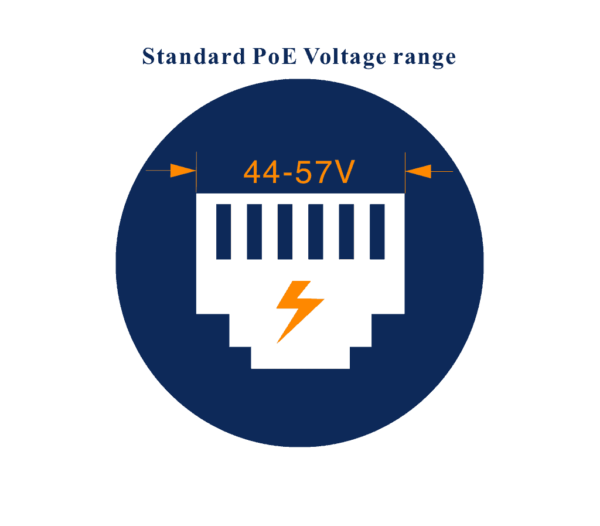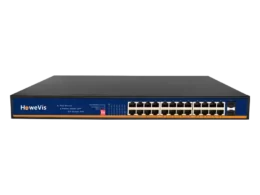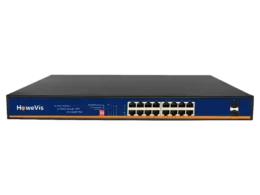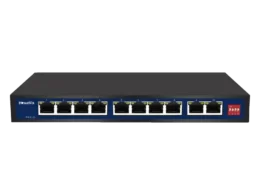Are you a fan of PoE technology? I suppose you must be because of its numerous benefits in our electrical system. Before introducing PoE technology to our system, we had a low power supply and low-speed data connection. To figure out power supply issues, we have PoE technology nowadays.
For example, in the industrial zone, there are requirements for particular types of high-power systems. To overcome power issues and domestic conditions out there, we have Hardened PoE switches. In short, we have advanced technology to operate our devices and supply them with high power.
What is PoE Technology?
Do you know what exactly PoE technology is? How has it helped us in the power management system? Not only power supply but also data speed is a unique feature of PoE technology. Let me briefly introduce PoE technology.
The term PoE stands for “Power over Ethernet.” What is Ethernet? Ethernet refers to cables used in the system to transfer data and power supply. Now, I believe it is no longer challenging to define PoE technology.
PoE technology refers to the mechanism for data connection and high power supply over the Ethernet cable. Here are some facts about PoE technology.
- A single Ethernet port can work for both functions — data connection and power supply.
- Ethernet port varies from Cat3 to Cat8.
- PoE technology works on standards developed by the Institute of Electrical and Electronics Engineering(IEEE)
- PoE can provide data up to 1 gigabyte speed and power supply with a maximum of 95 watts.
For a detailed analysis of PoE, I would recommend reading our article — What is PoE?
How does PoE work?
Do you know the exact mechanism on the backend of PoE? Maybe not. Read the guide to understand how exactly PoE works.
PoE works on the IEEE 802.3 standards. We will explain it later on. There is a connection between the power device and the PoE switch with the help of the Cat5 Ethernet cable. You can use other Ethernet ports like cat6, 7, or 8. Through the Ethernet cable, data transfer and power connection occur between the power device and the switch. It is how exactly the PoE technology functions in your offices or industrial zones.
What are the different IEEE 802.3 standards?
Every electrical system has rules and principles upon which it works. The same is the case with Power over Ethernet. It works on the principles of IEEE 802.3. So, depending on 802.3, here are PoE standards.
- 802.3af Type 1
- 802.3at Type 2
- 802.3bt Type 3
- 802.3bt Type 4
802.3af standard is an earlier one, while 802.3bt is the latest version introduced in 2018. Our main topic of discussion is 802.3af. So, I am supposed to focus on this IEEE 802.3af.
For all types of standards, you can look at the article—What are different kinds of PoE?
What is the IEEE 802.3af standard?
In 2003, IEEE developed the first standard of PoE called 802.3af. At that time, people harnessed it to provide low-power devices. Let’s have a look at the peculiar features of the IEEE 802.3af standard.
Power Supply:
Power Supply is a matter of concern for everyone. Does it have a high power or provide low power? In the case of 802.3af, the maximum output power from the PoE switch is 15.4 watts. In the meantime, you can provide power up to 12.95 watts to the power device.
Maximum Current:
We usually measure currents in units of Amperes— on the name of the scientist. However, 802.3af uses a maximum current of 350 milliamperes.
Ethernet Compatibility:
Multiple Ethernet ports offer data support and power supply over the single Ethernet port. IEEE 802.3af standard has compatibility with Ethernet ports with 10BASE-T, 100BASE-TX, and 1000BASE-T.
Range:
What do you expect about the range? Maybe you already know the answer. Like all other PoE standards, it has a range of 100 meters. It means it can supply data and power over an Ethernet cable within 100 meters of the connection. Are you thinking about increasing it? Yes, you can do that. Use PoE extenders to increase the range up to 800 meters. Isn’t it cool?
Port Pairs:
Nowadays, you can find 4 pair Ethernet port systems using PoE 802.3 bt. If we consider IEEE 802.3af, you can’t use 4 pairs of Ethernet ports. Instead, it works on 2 pairs of copper wires.
Ethernet Port Type:
II have already highlighted some concepts about Ethernet cabling types. Today there is Cat 3, 5, 5e up to Cat 8. These all offer different power supplies in a variety of ranges. 802.3af standard requires a minimum of cat3 cabling.
What voltage is PoE 802.3 af?
Finally, we are at our main topic after getting at many significant concepts.
The maximum output voltage of the Power supply varies from 44 volts to 57 volts. In the case of voltage available to power devices, it ranges from 37 volts to 57 volts. In this range of voltage, you can operate your devices and obtain benefits from 802.3af technology.
-
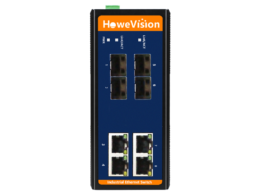 Industrial Gigabit Managed Ethernet Switch, 4-Ports 10/100/1000Base-TX RJ45, 4 Ports 100/1000Base-FX Fast SFP Uplink
Industrial Gigabit Managed Ethernet Switch, 4-Ports 10/100/1000Base-TX RJ45, 4 Ports 100/1000Base-FX Fast SFP Uplink -
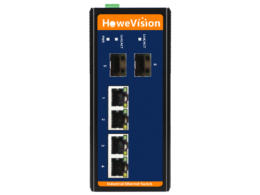 Industrial Gigabit Managed Ethernet Switch, 4-Ports 10/100/1000Base-TX RJ45, 2 Ports 100/1000Base-FX Fast SFP Uplink
Industrial Gigabit Managed Ethernet Switch, 4-Ports 10/100/1000Base-TX RJ45, 2 Ports 100/1000Base-FX Fast SFP Uplink -
 Industrial Gigabit Managed Ethernet Switch, 2-Ports 10/100/1000Base-TX RJ45, 2 Ports 100/1000Base-FX Fast SFP Uplink
Industrial Gigabit Managed Ethernet Switch, 2-Ports 10/100/1000Base-TX RJ45, 2 Ports 100/1000Base-FX Fast SFP Uplink -
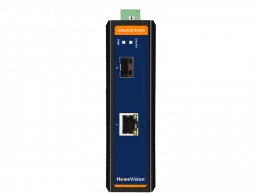 Industrial Gigabit Ethernet Switch, 1-Port Gigabit Ethernet RJ45, 1-Port Gigabit SFP Uplink
Industrial Gigabit Ethernet Switch, 1-Port Gigabit Ethernet RJ45, 1-Port Gigabit SFP Uplink
What are the applications of the IEEE 802.3 af standard?
PoE 802.3af involves many applications related to our real lives. Here are some of those applications discussed that utilize this Power over Ethernet standard.
Wireless Access Points:
Have you ever gone to outdoor places? Maybe at the office, you might have Wifi devices that provide a data connection to the devices like Laptops, etc. What do you think what type of technology do they employ? Wireless Access Points make use of the 802.3af standard to provide users with high-speed data.
Static Surveillance Cameras:
At outdoor places or strict security sites, you can observe the static surveillance cameras. Especially IP cameras that offer no movement work as fixed surveillance cameras. These cameras employ the PoE 802.3af standard to get data connection to transfer media.
Voice Over Internet Protocol Phone:
Voice Over Internet Protocol Phone uses PoE technology to transfer the media and voice.
What are the advantages of IEEE 802.3 af standard?
IEEE 802.3af has applications in our daily lives. Do you know, why? Because it is beneficial and safe to use, especially for surveillance purposes. Here are the top benefits of the IEEE 802.3af standard.
- Easy to use and preinstalled in most buildings.
- It doesn’t require multiple wires to provide a connection. Instead, a single Ethernet port is enough to accomplish all the tasks. So, this approach can save you money.
- Minimizes power loss by assessing the power of the power device and providing the necessary supply.
- High secure. It uses different security protocols such as SSL, SSH, and RADIUS to provide high data speed over a secure data connection.

